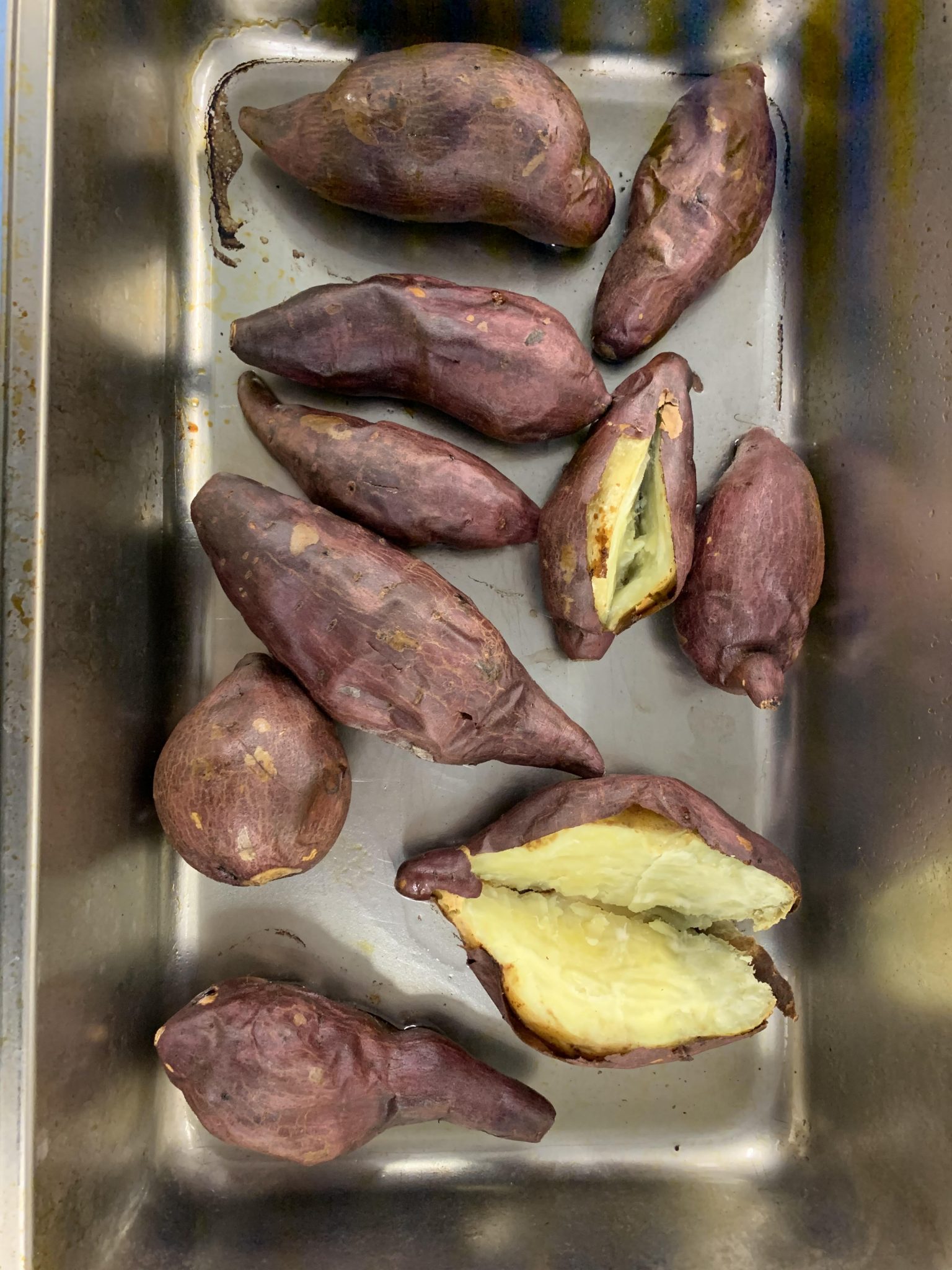Unearthing the Murasaki Sweet Potato: Flavor, Texture, and Origin
Forget the typical orange sweet potato—the murasaki sweet potato, with its vibrant purple skin and surprisingly creamy white flesh, presents a whole new world of culinary possibilities. Its unique flavor profile—nutty, subtly sweet with hints of chestnut, brown sugar, and even a touch of vanilla—sets it apart. Unlike the often moist texture of orange varieties, the murasaki sweet potato boasts a drier, starchier consistency, similar to a russet potato, making it incredibly versatile in the kitchen. Though often marketed as “Japanese sweet potatoes,” these beauties were actually developed in Louisiana, showcasing how food origins can sometimes be misleading.
A Sensory Delight: Unpacking the Murasaki’s Unique Qualities
This isn’t just a pretty face; the murasaki offers a distinct culinary experience. Its dry, starchy texture, resulting from a high dry matter content (30-32%), allows it to crisp up beautifully when roasted or fried, achieving that satisfying crunch we all crave. Yet, when pureed, it transforms into a velvety smooth base for soups, dips, or even decadent desserts. The subtle sweetness, combined with earthy and nutty undertones, provides a sophisticated flavor profile that shines in simple preparations, allowing its unique qualities to take center stage.
Culinary Adventures: Unleashing the Murasaki’s Versatility
The murasaki sweet potato’s unique characteristics lend themselves to a wide range of culinary applications. Its drier texture makes it a star in dishes where crispiness is desired:
- Roasted: Tossed with olive oil, herbs, and spices, roasted murasaki sweet potatoes develop a caramelized exterior while retaining a fluffy interior.
- Fried: Think crispy, subtly sweet fries that are a healthy and delicious alternative to traditional potato fries.
- Gratins: The drier texture absorbs flavors beautifully without becoming mushy, resulting in a comforting and flavorful dish.
Beyond crispy and roasted delights, the murasaki sweet potato’s creamy texture when pureed opens up further possibilities:
- Soups: Add pureed murasaki to soups for added depth, creaminess, and a touch of earthy sweetness.
- Purees: Use as a base for dips, sauces, or even baby food, offering a nutritious and flavorful twist.
- Baked Goods: From pies and cakes to quick breads and muffins, the murasaki’s subtle sweetness and beautiful color enhance both flavor and visual appeal.
Nutritional Benefits: A Purple Powerhouse of Nutrients
Like its orange cousin, the murasaki sweet potato is a nutritional powerhouse, packing a punch of fiber, essential vitamins (like A and C), and minerals. While ongoing research continues to explore its full nutritional profile, it’s likely that the murasaki offers a unique blend of antioxidants, potentially including higher levels of certain compounds compared to orange varieties. This is an area of active study, and future research may reveal even more about the health-promoting properties of this vibrant vegetable.
Sourcing & Growing: From Market to Garden
Finding murasaki sweet potatoes may require a bit of a treasure hunt. While not as ubiquitous as orange sweet potatoes, they can often be found at specialty grocery stores, farmers’ markets, and sometimes even at Trader Joe’s (seasonally). Online retailers like eBay and Etsy also offer tubers, slips, or cuttings, providing options for those who can’t find them locally.
Growing Your Own Purple Gems: A Step-by-Step Guide
For the truly adventurous, growing your own murasaki sweet potatoes is a rewarding experience. Here’s a simple guide to get you started:
- Start with slips: These are young shoots grown from a mature sweet potato, readily available at nurseries or garden centers.
- Prepare the soil: Murasaki sweet potatoes thrive in well-drained soil rich in organic matter.
- Plant the slips: Plant them about 12 inches apart in a sunny location.
- Water regularly: Keep the soil consistently moist, but avoid overwatering.
- Be patient: Murasaki sweet potatoes typically take about 90-120 days to mature.
Murasaki vs. Other Sweet Potatoes: A Comparative Look
While all sweet potatoes offer nutritional benefits, the murasaki distinguishes itself with its unique flavor, texture, and potential antioxidant profile. Here’s a comparison:
| Feature | Murasaki Sweet Potato | Common Sweet Potato |
|---|---|---|
| Skin Color | Deep Purple | Orange, Yellow, Red |
| Flesh Color | Creamy White | Orange, Yellow, White |
| Flavor | Nutty, Earthy, Subtly Sweet | Sweet, Sometimes Earthy |
| Texture | Dry, Starchy | Moist to Dry |
| Starch Content | Higher | Lower |
| Antioxidant Profile | Potentially Unique | Varies by Variety |
The Healthiest Sweet Potato: A Matter of Perspective
While the murasaki offers unique benefits, declaring one sweet potato “healthiest” is an oversimplification. Each variety presents its own strengths. Purple sweet potatoes, including the murasaki, are often touted for their antioxidant content, notably anthocyanins. Orange varieties are celebrated for their vitamin A, crucial for vision and immune function. White and yellow sweet potatoes contribute fiber, potassium, and other essential nutrients.
Furthermore, understanding the glycemic load (GL) is crucial, particularly for those managing blood sugar levels. GL considers portion size and provides a more practical measure than the glycemic index (GI). Ongoing research is exploring the GL of various sweet potato varieties, offering promising insights for informed dietary choices.
Ultimately, the “healthiest” choice depends on individual needs and preferences. Embrace variety, explore different types, and enjoy the diverse flavors and nutritional benefits sweet potatoes offer.
Are you stumped on that pesky crossword puzzle? Discover the answer with this helpful resource on oatmeal gruel or stew crossword clue.
- Revolution Space: Disruptive Ion Propulsion Transforming Satellites - April 24, 2025
- Race Through Space: Fun Family Game for Kids - April 24, 2025
- Unlocking the Universe: reading about stars 6th grade Guide - April 24, 2025
















